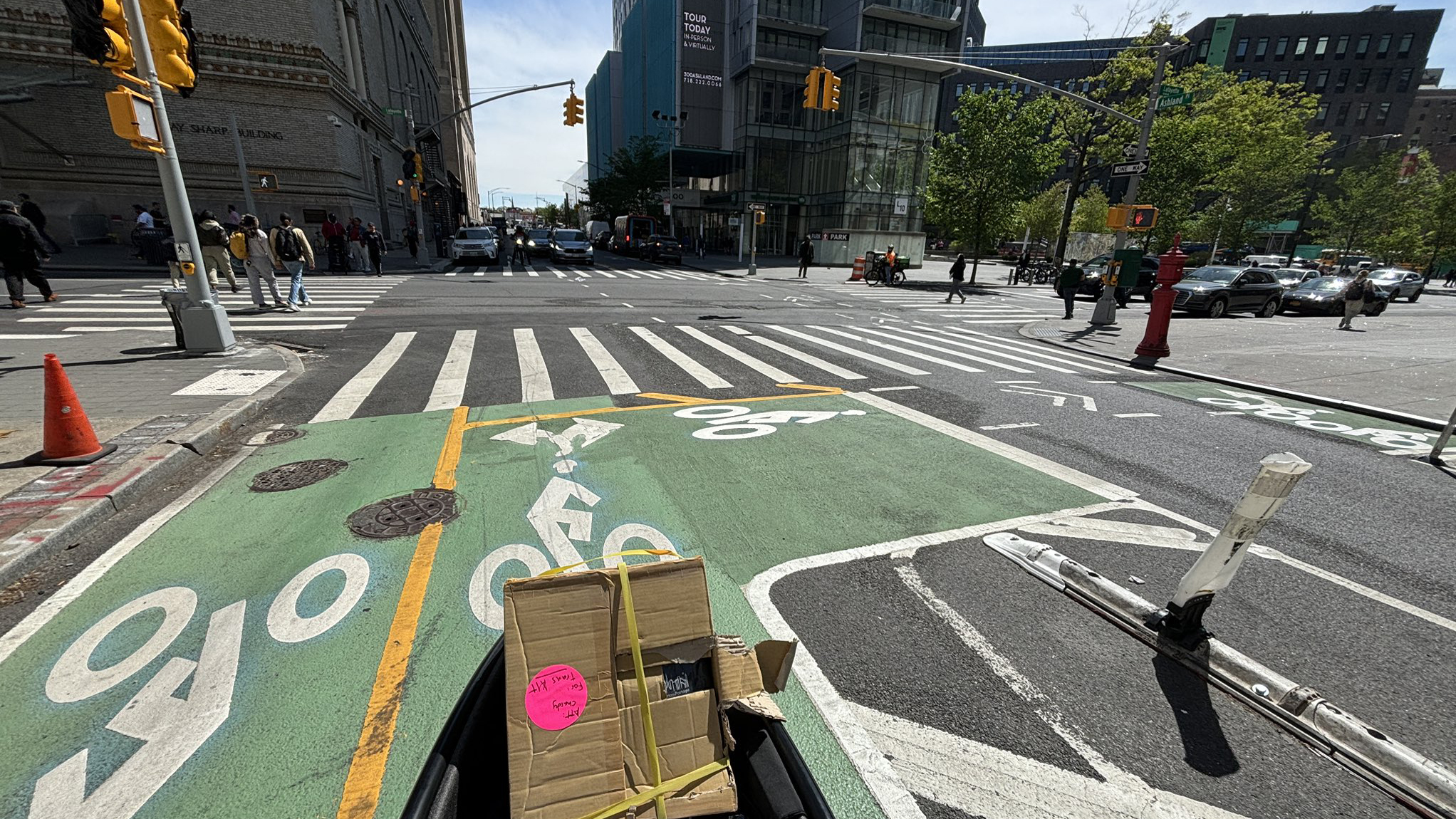As you probably know, the Congress for the New Urbanism is holding its annual meeting out in Denver this week. Today on the Streetsblog Network, we've got a post from member Joe Urban (a.k.a. writer Sam Newberg) that talks about the real-life impact of the "new urbanist" approach to planning in that city, and the importance of conveying that impact to the public when trying to implement similar planning approaches elsewhere.
Newberg writes about touring Denver's Stapleton neighborhood in 2003 with a group of other planning nerds, admiring the development patterns there, when the whole thing came to life for him:
We were passing a small pocket park when suddenly a young mother emerged from her house, dog and preschool daughter in tow, to let the two run around in the grass. Everyone in our tour immediately wheeled around to photograph an actual human being using and apparently enjoying new urbanism. I felt embarrassed for her, with 40 of us planning geeks photographing her dog take a pee.…
Of course, she doesn’t care that it is new urbanism. She probably values a nice new home across the street from a park. For all I know, the mix of housing types, local school to which they can walk, nearby town center, and sidewalks were trivial to her. It was striking to me, for all the time we spend planning and dreaming up visions of how places might some day look and function, was how seemingly off guard we were to see a great plan being used the way it was intended, by JoAnne Urban, and with so little apparent thought.
Perhaps that is what is so important about getting new urbanism, and good urban development in general, built. Vision and leadership. The mayor of Charlotte, North Carolina, Patrick McCrory, spoke last night at the CNU’s opening “plenary.” After buttering us all up with compliments about our work, he leveled with us.
He said you can’t just create some designs and put them in a book that 99% of the public, including city councils and mayors, cannot understand. Show them how it will look. Sell a vision. Give the public an example like the young mom at Stapleton, stepping off her front porch and crossing a narrow street to an intimate neighborhood park to let her dog and kid run around, and suddenly you get public support. Leave the details to the planners and architects.
Of course, Denver is still the exception rather than the rule in American development. Today at The Urbanophile, Aaron Renn writes about the principle of "creative destruction" as it relates to Midwestern cities that have fallen into steep decline:
Entire industries that used to exist now no longer do. Companies that failed to reinvent themselves for a new era often failed. This had both a financial and human toll. There's no need for Midwesterners to dwell too much on this as they know it all too well from personal experience or front line observation.
What's true for companies and markets also seems to be true of places as well. Most Midwestern cities would appear to no longer have that much economic relevance. They aresustained primarily on inertia and legacy economies that are in a state of decline. The challenge for them is to reinvent themselves for a new century and a new world.
This isn't easy. Reinventing yourself requires letting go of what it is you identify as core to what you do today -- never easy in the best of times, and particularly difficult in a place like the Midwest. Midwest cities need, more than anything, a game plan for making themselves relevant to the people and businesses who will be fueling the 21st century...
This is the real challenge. To come up with the right approach to create a viable niche the modern economy. Without this, too many places are simply going to end up like buggy whip manufacturers. Cities, like companies, can become obsolete. And the toll will be large in human, financial, and environmental costs.
It is imperative that there be a vision for change that is serious, relevant, and championed by community leadership. This can mean political leadership such as that from Mayor Daley of Chicago, who has been a tireless champion and promoter for Chicago's transformation. It could also come from other sources too, such as leadership from a motivated business community. But whatever the source of it, it has to come from somewhere.
Looking for something a little lighter to carry you into the weekend? Got to love the story of the NYC subway conductor who delivered a baby on the R train the other day. We bring it to you via Transit Blogger.





